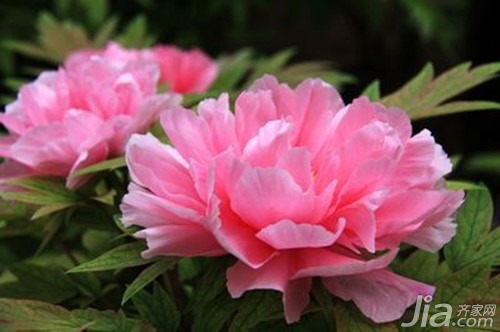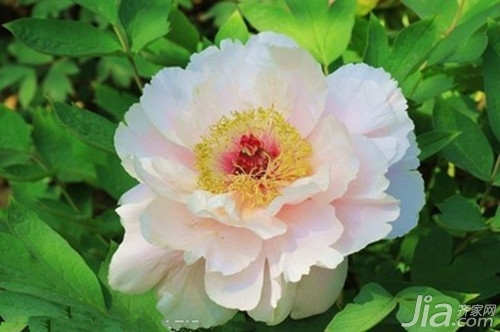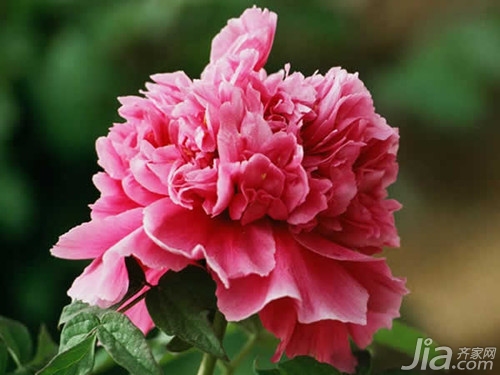The riches and beauty of peony are the admiration of the world. I still remember when neighbors planted several pots of peony seedlings because I did not understand the growth habits of the peony flowers and placed all the peony flowers outside the yard during the winter, which caused the death of all peony flowers. Peony is more difficult to raise than Chinese rose and narcissus. Today Xiaobian said how to raise peony ?

The most suitable season for planting peony flowers: pot cultivation Peony flowers are recommended for cultivation from September to October. Family breeding should pay special attention to the selection of varieties. Compared with other varieties, peony flowers such as Luoyang Red and Huhong are more suitable for pot cultivation, and their adaptability to the environment is stronger. Plants should use peony for rootstock grafting of 3-4 years old tree peony or 3-5 branch ramets. Peony can also be propagated by sowing, but it takes 4-5 years to bloom by sowing.
The flowering period of peony: from April to May is the flowering period of peony. If properly managed, the normal flowering period is generally about 10 to 15 days, and of course there is a long flowering period, about 20 days! The flowering period of peony will be affected by climate and The effect of temperature. When peony blossoms, it can be covered or temporarily placed in the room to avoid direct sunlight. This can extend the flowering period. The buds on the top of the main branch are the leaves buds. They should be removed so as not to affect the flowering. In order to make the peony bloom brightly, it can be sprayed 2-3 times with 0.5%-1% dihydrogen phosphate solution during flowering.

How to manage the peony after the flowering period: timely flower removal, pruning, thank the tree according to the natural growth of the tree under the shape of the cut, at the same time in the pruning mouth smear wound protection anti-corrosion film to protect the wound, prevent bacteria invasion of the infection. If the plants are low and the flowers are dense, they should be shorter and shorter in order to inhibit the extension of the shoots and the occurrence of root axils. Generally, it is appropriate to keep 5-6 branches per plant.
The main reasons for the low survival rate of potted peony flowers are: 1. Improper temperature control. 2. Improper fertilization. 3. Lighting conditions.
Peony flower growth habits
1. The southern culture of peony should pay special attention to temperature, watering, light, fertilization and other factors. Peony is a deep-rooted deciduous shrub flower, which is hi-sun, cold-resistant and cool, and avoids high temperature and heat. It is suitable for growth in loose, fertile, well-drained sandy soil (preferably a mixture of sand and cake fertilizer, or Fully cooked manure, garden soil, and coarse sand mixed in a ratio of 1:1:1. Because of its longer roots and larger plants, peony is suitable for planting. For potting, large, well-pervious tile basins should be selected, and the depth of pots should be 30 cm or more. It is best to use a tile cylinder with a depth of 60-70 cm. The weather in the south is hot and hot. During the summer high temperatures, it is necessary to prevent the peony from being exposed and take cooling measures in time. Some flower buds responded that the peony planted did not bloom. Here, if the temperature is not controlled, let it be heated and the fallen leaves will seriously affect the flowering.

2. The rotted root phenomenon of peony is often caused by improper watering. Generally, the potted soil of the cultivated peony is suitable for the cultivation of too much water in the soil, and its fleshy roots are easily rotted. When encountering continuous rain, it is necessary to drain water in time and must not allow water to accumulate in its roots. Continuous rain should move pots to the room. Basically, water is not watered during the summer and the temperature rises during the spring and autumn seasons. Usually, the watering takes about 10 days. If you cannot pour to the pelvic floor at one time, you can pour it several times and pour it into the pelvic floor. Watering later depends on whether the basin is wet or dry. Pay attention to watering in the summer, do not make the basin soil dry to affect plant growth, basin soil can maintain moisture is appropriate. Peony should not be fertilized in the new pot, and it can be fertilized after half a year later. Fertilization can not be too hard, 2-3 times a year can be. When buds and leaves are stretched in early March, they can be fertilized once in order to increase and enlarge the flowers. The flower just fades in late May and can be used once to supplement nutrients. Fertilizer is preferably fermented and decomposed chicken manure or bean cake water, and the ratio of fertilizer to water is 30%. Fertilizer should be selected sunny weather, after the basin soil dry. Stop watering before application. At the same time, care should be taken not to splash the fertilizer solution onto the leaves. If it has been stained, rinse it with clean water.
3. Improper fertilization can cause yellowing of peony leaves. Fertilizer or less fertilizer will cause yellow leaves. Peony should not be fertilized in the new pot, and it can be fertilized after half a year later. Always loosen soil during growth. Fertilization should not be too hard. It can be 2-3 times a year. When buds and leaves are stretched in early March, they can be fertilized once in order to increase and enlarge the flowers. The flower just fades in late May and can be used once to supplement nutrients. Fertilizer is preferably fermented and decomposed chicken manure or bean cake water, and the ratio of fertilizer to water is 30%. Fertilizer should be selected sunny weather, after the basin soil dry. Stop watering before application. At the same time, care should be taken not to splash the fertilizer solution onto the leaves. If it has been stained, rinse it with clean water.

4. If you do not pay attention to the light, it will cause the peony to spend the leaves. After the peony flowerpots are transferred to normal management, they can be placed in sunny places to ensure that they have sufficient sunlight. Peony is a long-day plant that is slightly light and shade-resistant, and the natural illumination time for flowering is about 10-12 hours. Therefore, if the flowering time in the greenhouse should be extended as long as possible, it can reach 10 hours or more. Especially in the early and middle stages, if the light is less than 8 hours long, the buds will stop developing and gradually shrink, and even the leaves will stop growing. Hu Hong is particularly sensitive. The lack of light hours is an important reason for the failure of peony flowering.
5. Northern Peony flowers need to pay attention: Although peony is more hardy, but in cold areas such as North China, before and after the winter, should be moved into the room, placed in the room sunny, room temperature can be maintained at about 0 degrees. It should not be too early to leave the room the following year. In areas where it is not too cold, the flowerpots can be buried in the soil in a place with hidden wind, so that the surface of the pots is flush with the ground to maintain the humidity and temperature of the potted soil, and the peony can also be safely overwintered. After the peony flower blooms in the spring of the second year, the peony will be dug out of the ground for normal management.

6. Peony pest control: The common diseases of peony are brown spot, root rot and scale insects. Brown spots or brown spots appear on the leaves of the brown spot, which can be sprayed 1-2 times per month with Bordeaux mixture. If the disease is severe, it can be sprayed 3 times. The leaves that are seriously affected should be cut and burned to prevent the spread. If root rot is found, cut the root of the disease and burn it, and sprinkle some sulfur powder in the planting hole when planting. Scale insects sprayed with 40% omethoate emulsion plus 1500-fold aqueous solution had better results.
Information on how to raise peony has been introduced here for everyone. I hope this article will help everyone. If you still have something you don't understand, you can leave a message to Xiaobian at the bottom. We will answer your questions as soon as possible.
How to do a budget decoration with a loft How to decorate a renovation budget How to make a renovation loan How to apply
In chemical reactions reactants can change the chemical reaction rate (increase or decrease) without changing the chemical equilibrium, and its own quality and chemical properties of the chemical reaction did not change before and after the catalyst called (solid catalyst also called catalyst). According to statistics, about 90% of the industrial process using catalysts, such as chemical, petrochemical, biochemical, environmental protection and so on. [1] A wide range of catalysts, according to the state can be divided into liquid catalyst and solid catalyst; according to the reaction system is divided into homogeneous phase homogeneous catalyst and heterogeneous catalyst, homogeneous catalyst with acid, alkali, soluble transition metal compounds and peroxides catalyst. Catalysts occupy an extremely important position in the modern chemical industry. For example, three catalysts, namely, an iron catalyst for ammonia production, a vanadium catalyst for sulfuric acid production, ethylene polymerization, and three synthetic materials such as butadiene rubber are used .
Catalysts And Auxiliaries,Trimethylamine Hydrochloride,Tetrapropylammonium Bromide,Benzyltri N-Butylammonium Chloride
SHANDONG ZHISHANG CHEMICAL CO.LTD , https://www.zhishangchemical.com